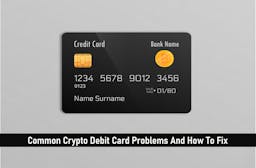
Updated: August 17, 2022
ADA Staking: the Ultimate Guide to Cardano Staking.
Staking coins or cryptocurrency simply means locking a currency for future rewards.
This can happen directly from your crypto wallet, for example, you can stake from a Ledger Nano X hardware wallet easily. Some premium exchanges offer this service as an earning option for investors.
Cardano (ADA) runs on a Proof-of-Stake mechanism and it is preferred compared to the Proof-of-Work method used as a reward mechanism for other smart contracts like Bitcoin.
With over 71.9 percent of the total circulating supply of ADA now staked, Cardano is still the most decentralized blockchain network on the crypto market.
Staking is geared to help grow the overall ecosystem and also earn rewards for investors. However, staking comes with its risks.
In this step-by-step guide on Cardano (ADA) staking, I’ll explain all you need to know about investing in Cardano mainly by staking.
Earning a Reward through Proof-of-Stake
Generally, you can earn fractions of tokens through any of the two consensus mechanisms.
One is the Proof-of-Work PoW and the other is Proof-of-Stake PoS as mentioned earlier.
Instead of using a network of miners, Proof-of-Stake uses a network of willing participants known as validators. Instead of competing to solve a complex puzzle, validators stake their own coin.
In proof-of-work mechanism consensus, you invest and earn by performing a tactical and immense task of validating a transaction via crypto mining.
Proof-of-work approach to mining entails the use of computational power to solve a complex mathematical puzzle.
Mining requires a pool of miners competing to solve this complex hashing puzzle through their powerful GPU or CPU hardware computers.
Consequently, when a transaction is validated, a new block is created and the miner earns a reward which is usually a fraction of the cryptocurrency.
Cardano miners earn 750ADA per block completed.
Bitcoin miners earn 6.25BTC per block completed.
Ethereum miners earn 3ETH per block completed.
Dogecoin miners earn 10,000DOGE per block completed.
However, the downside of this PoW is that process consumes an enormous amount of electricity and it also encourages the centralization of blockchain.
Bitcoin and Ethereum are the major cryptocurrencies that use the PoW model, however, Ethereum is on the verge of introducing version 2.0 adopting the PoS mechanism.
Cardano (ADA) adopts the Proof-of-Stake mechanism.
On the other hand, Proof-of-Stake was introduced to the crypto community as an alternative model of validating transactions.
It makes investing a lot easier and convenient.
Validating a transaction using the PoS model is done by the random selection of the node that would create the next block in the blockchain network.
The selection is determined by an algorithm using the number of coins staked by the blockchain node.
A node can be an individual or a pool of stakeholders. This form of consensus rewards with a transaction fee.
It does not require the use of a heavy computer hence requires minimal investments in power. It also curbs fraudulent acts as any attempt can cost the fraudster his stakes.
Several cryptocurrencies use this model and Cardano (ADA) is one of them.
SEE ALSO: How Does Proof-of-Stake Improve Proof-of-Work?
SEE ALSO: What Cryptos Can Be Staked On Coinbase
SEE ALSO: Top 11 Best Cardano (ADA) Wallets for Staking & Storage
SEE ALSO: 3 Key Things to Look out for When Buying a Hardware Wallet
Cardano Staking
Cardano stakeholders or validators hold their ADA in the Cardano blockchain network.
And, coins held by validators are their stakes, the more coins they hold, the more their stakes are. When users designate their holdings, they are rewarded.
You can stake your holdings in two ways: it is either you go solo, staking it individually or you designate to an already established pool.
When you designate your ADA into a pool, you increase the pool’s chances of winning the reward because you’re staking on a bigger pool.
Hence, the more designation a stake pool receives, the more its chances of being the new block creator.
When a pool produces a block, the reward from it is shared among the investors of the pool.
The Ouroboros Proof-of-Stake Model
Ouroboros is a consensus algorithm used by Cardano. It is a customized proof-of-stake model twisted to suit Cardano’s mode of operation.
Normally, a proof-of-stake model operates by allowing transaction blocks to be created by nodes with the highest number of stakes. However, the Ouroboros algorithm has a different way of operation.
The Cardano team modified Ouroboros by splitting natural time into slots of fixed periods called epochs.
These epochs work in an annular form, meaning when one epoch ends; another one begins. This helps to minimize gas fees and to decrease network congestion.
Each epoch has a slot leader that is chosen by the nodes. The leaders have to oversee the building and verification of the transaction blocks and add them to the blockchain.
Should a chosen slot leader fail to make a block in his epoch, the following epoch slot leader would attempt creating the particular block.
The input endorsers are the second stakeholders’ group operating the Ouroboros model.
They act the role of reviewing the transaction blocks delivered by the slot leaders. They are as well selected according to the number of Cardano coins they staked.
The need for enormous energy to operate proof-of-work has been a core of negative speculations facing the Ethereum and Bitcoin blockchain networks. The Ouroboros model has, however, eradicates this issue as it requires minimal energy.
What You Need to Know About Staking Cardano (ADA)
Before you decide whether to stake ADA or not, understand the following:
The Benefits of Staking Cardano
There is no significant setback for long-term holders of Cardano that wish to stake their coin.
If the ADA coins you are holding can be staked, then you should stake them. By doing so, you should earn a passive income and the returns are quite more than that of traditional investments.
Some users are concerned about losing their coins so they hold back and stake very little quantity. That is understandable, I’ll share also the risks of staking later.
However, you do not have to hold back because you would still have your coins back after staking them.
Staking generally aids the maintainance of the crypto blockchain network with little energy requirement and also allows users to earn interest.
Risks of Staking Cardano
“Mining and other forms of cryptocurrency investments involve risks,” this saying is true and it has given a lot of Cardano users concerns about the safety of their tokens.
Any staked ADA coins remain in your wallet and you will earn interest on it just like you will do in a savings account.
There are two different keys for spending and staking Cardano. When staking, your ADA would remain in your wallet, it only leaves when spending. This implies that you can stake or limit your stakes on your Cardano at any time.
Losing your wallet’s private key is a general problem regardless of whether you stake it or not. However, the only potential risk is when your designated pool operators are dubious and tries to take all the reward for themselves which is rare.
Even at that, you would not lose your stake but won’t gain any reward either. Hence, there is little to no risk in staking your Cardano.
How Volatile is Cardano (ADA)?
Staking cryptos is indeed one way to earn passive income. However, before staking, you need to consider the value of the token’s market value, capitalization, its supply depth which is its market liquidity.
Similar to any other crypto, Cardano has a very volatile and unpredictable price. If the price of ADA dips or there is a major selloff in the crypto market, the incurable investment losses can be greater than the earnings from staking.
How Much is Cardano (ADA) Today?
Cardano’s price is trading in its normal range today, but it could witness dips or surge in the cause of trading.
[mcrypto id=”4219″]
How Can I Stake Cardano?
Once you have Cardano coins in your wallet then you are eligible to stake on the Cardano blockchain network.
You may decide to run your node yourself, but if not, you can delegate your coin to a trusted pool that would stake on your behalf.
Paxful Exchange supports the staking of Cardano. With Paxful, you get a free wallet that is secure, flexible, and easy to use. Your staking interest can start with just a few clicks.

Pool operators are Cardano users that run stake pools. They receive delegated coins from others and also share the dividends among their investor if they win.
The following steps are ways you can participate in Cardano Staking as an investor.
How to Participate in a Stake Pool
Participating in a “Stake Pool” is pretty straightforward.
You could use single or multi-wallets to delegate your coin to a stake pool of your choice. To increase your chance of winning a block you should choose from the top-rated stake pools available, then you need a wallet that is also compatible.
Cardano blockchain gives percentages to pools according to how well they performed and how much they are desired.
How to Delegate Your Cardano from your Crypto Wallet
You can delegate your ADA to your stake pool via your wallet. For example, the top hardware wallet brands such as Ledger and Trezor hardware wallets support delegation of the Cardano token.
[table id=18 /]
If you want to opt for online wallets or hot wallets, you can as well use Daedalus and Yoroi wallets as both also support ADA staking designation.
I’ll illustrate briefly how to designate your Cardano (ADA) using a Daedalus wallet.
SEE ALSO: Trezor One and Trezor Model T Bitcoin Hardware Wallets – Which is Better?
SEE ALSO: World Most Popular Hardware Wallet-Ledger Nano S and Nano X
How to Delegate Cardano with a Daedalus Wallet
Daedalus is one of the first crypto wallets to aid delegation of Cardano stakes.
Steps include:
Download and install Daedalus wallet from its official website.
After opening it, go to the delegation center by clicking the network icon at the left menu.
Step 1
Your new wallet would be displayed in the interface. Select the wallet that contains the ADA you want to stake and delegate it.
Step 2
The detailed steps of staking would be displayed in a pop-up menu that will appear next. To go on, choose continue. Then the next step is to select a wallet into which your rewards would be paid.
Step 3
Next is to select a staking pool from the provided options: you can either choose from the provided list or type in the one you have predetermined.
Step 4
You have to pay the delegation fee by entering your password.
Note:
Operators of the stake pool do not have control over your Cardano coins and your personal data is exclusively yours.
After a couple of epochs, your selected wallet would be credited with your staking rewards.
By having multiple wallets and keying to the procedures above, you can share and delegate your ADA to different staking pools to increase your rewards.
Image credit: Cards vector created by rawpixel.com – www.freepik.com
Read More




